The history of naval aviation is often told as the history of the aircraft carrier and its planes. But naval aviation is a broader topic, and focusing on even the most important element gives an incomplete picture. I've talked about this some, with my look at aircraft operations from battleships, but it's time to turn our attention to one of the less successful and less explored aspects of the field, the use of lighter-than-air craft to support operations at sea.1
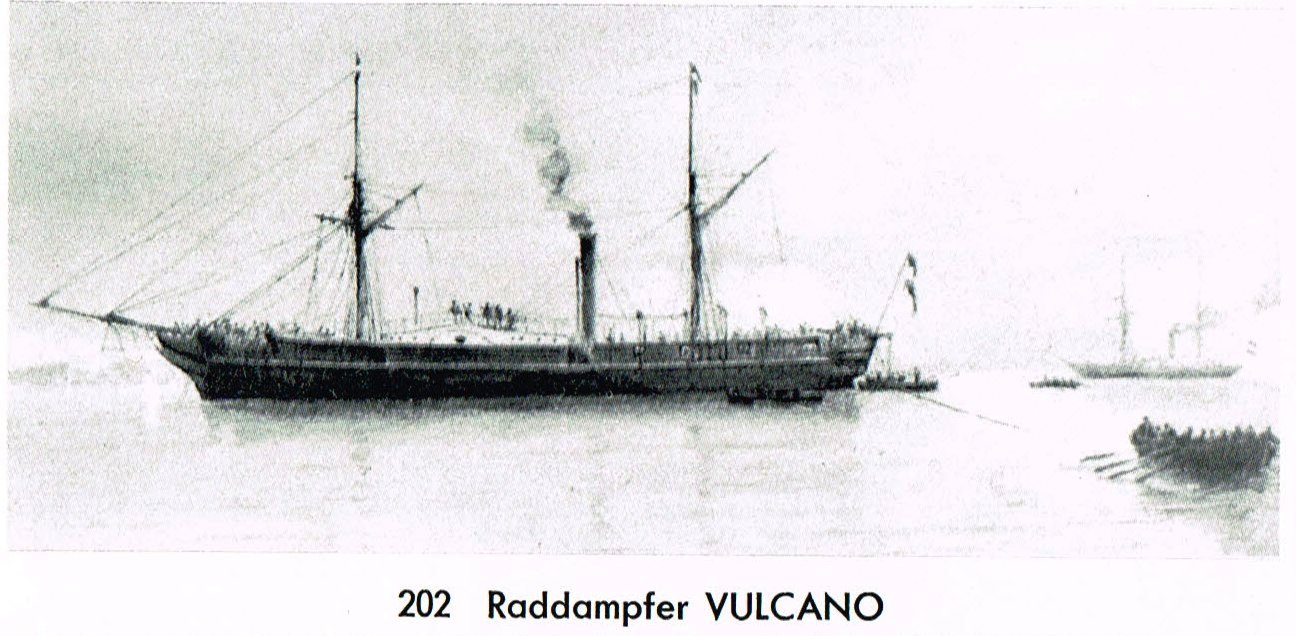
Raddampfer (sidewheel steamer) Vulcano
The first known use of lighter-than-air devices at sea dates back to 1849. Austria was attempting to put down a revolt by the Venetians, and someone came up with the idea of using hot-air balloons to carry explosive charges over the city. Timers would drop the explosives, hopefully persuading the inhabitants to come to terms. The plan, carried out from the deck of the steamer Vulcano, failed when the wind turned contrary and the balloons were blown back over the ship. Obviously, the experiment was not repeated.
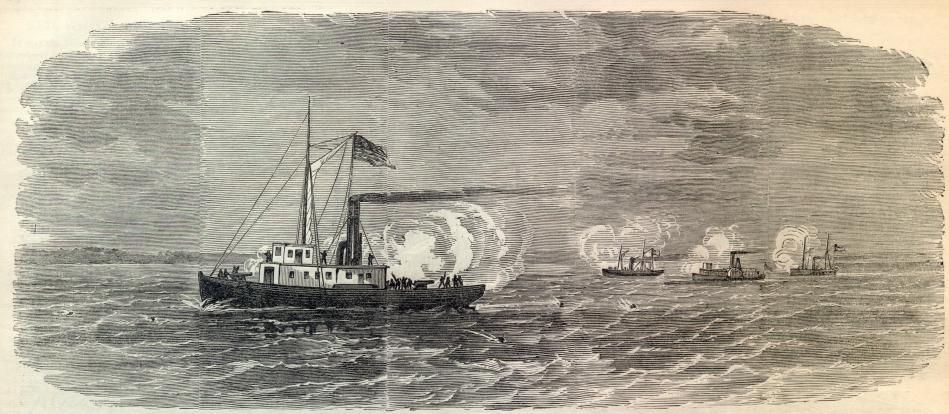
Fanny, one of the ships used as a balloon platform
Manned use of balloons from a ship would follow a decade later, during the American Civil War. Union forces used manned observation balloons from at least four different vessels, including one that was specially modified to produce hydrogen and handle the balloon, while the Confederates made an attempt that ended with the balloon-carrying vessel captured by Union forces after only a few days. One of the Union vessels gained the distinction of being the first to direct artillery fire during the campaign on the Mississippi, while the man who operated that balloon, John Steiner, later gave a German military observer by the name of Ferdinand von Zeppelin his first balloon ride. Zeppelin would be so influential on the creation of the rigid lighter-than-air vessel that the type today is often referred to by his name.
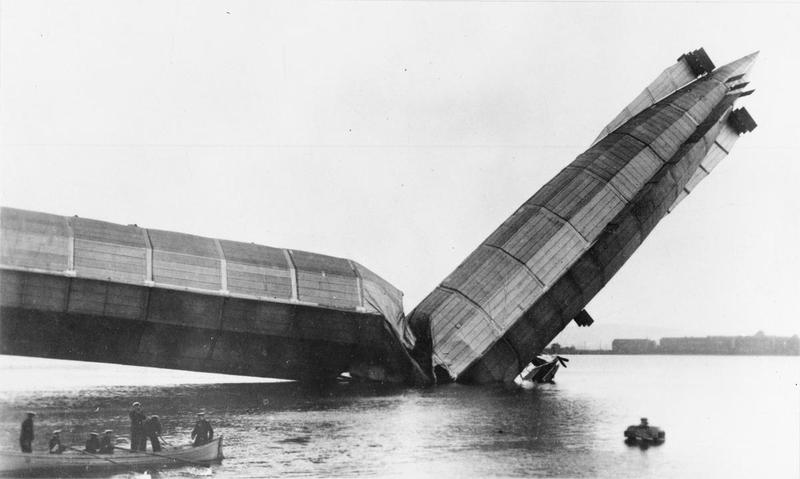
Mayfly, showing that she wouldn't
But these early attempts simply used ships as more-or-less stationary platforms from which to deploy aviation against shore targets.2 It wasn't until the start of the 20th century when distinctly naval aviation, for the support of sea power, began to take shape. One of the earliest advocates of this new field was Jackie Fisher, whose efforts, along with those of Reginald Bacon, the Director of Naval Ordnance, led the Royal Navy to order an airship in 1909. The hope was that it could serve as a valuable scout in good weather, and a rigid3 design, for high speed, was chosen. His Majesty's Airship No.1, nicknamed Mayfly, was completed in mid-1911, but broke up in a gust of wind before its first flight. This soured the Royal Navy on airships, and they turned towards fixed-wing aircraft.
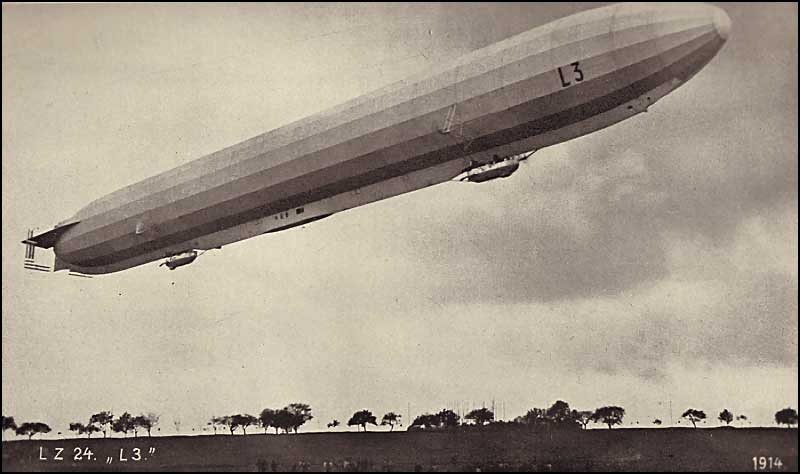
L 3, one of the first German naval airships
Even as Mayfly was falling to bits, the Kaiserliche Marine finally decided to take advantage of Zeppelin's expertise and buy airships of its own. The delay was due to Tirpitz's focus on the visible aspects of sea power over combat effectiveness, and even after they started procuring airships, the Germans planned primarily to use them in the tactical scouting role, bolstering their limited force of light cruisers. (The British had a much better appreciation of the potential of airships as strategic scouts, capable of finding the enemy at long range from the fleet.) Hindering development further was the loss of two of their three airships in 1913, one to a hydrogen fire that took out most of the Navy's aeronautical staff. But the outbreak of war focused minds, and Zeppelins were soon employed in scouting the North Sea. These missions could range from simple patrols off German bases to low-altitude flights to look for mines to scouting for the fleet and strategic reconnaissance. This was the main employment of Zeppelins during the war, with 926 reconnaissance sorties flown in the North Sea and 220 in the Baltic, most lasting 24 to 48 hours, weather permitting. But weather often didn't permit, and in 1915, the peak year, patrols were only carried out for 124 days, while other years tended to see patrols only 1 day in 4.
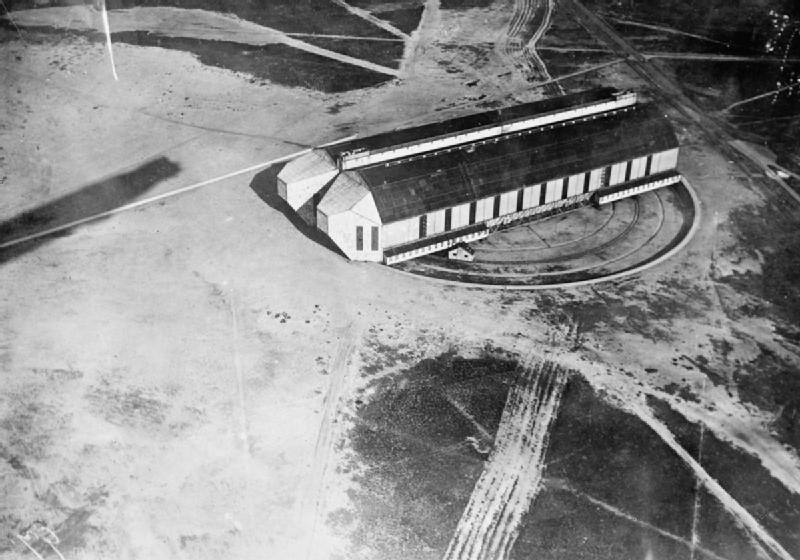
A German airship shed at Cuxhaven. This shed is able to rotate to make it easier to move airships in and out in all winds.
The Germans had only a little more success with their reconnaissance operations. One managed to get close to Yarmouth, on the British coast, in October 1914 without spotting any enemy ships, setting the stage for the battlecruiser raid on the town. During the Cuxhaven Raid, several Zeppelins sortied in pursuit of the British, and one even dropped a bomb on the carrier Empress.4 Another appeared during Dogger Bank in 1915, but was first driven into the clouds by fire from British light cruisers and then chose to stick with the German fleet instead of shadowing the British, meaning it made no real contribution to the battle.
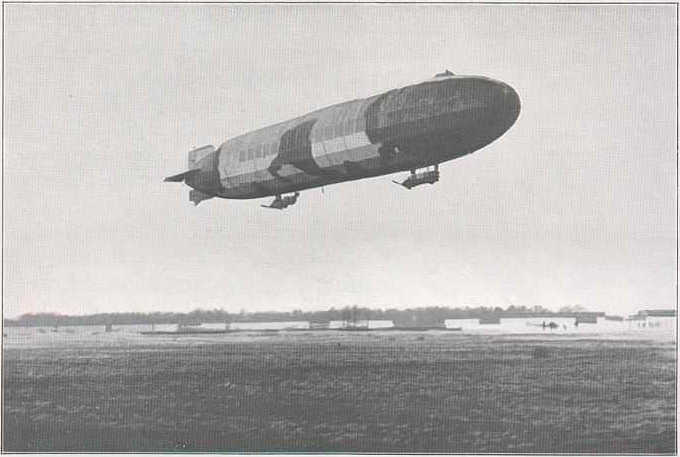
L 11, the only airship to make sustained contact with the British at Jutland
By 1916, the Germans had begun to develop a doctrine for the use of airships that didn't tie them as closely to their fleet, and planned to use them to cover a May raid on the north English coast. Unfavorable winds forced them to abandon the plan, and instead launch a sweep into the waters off Denmark. The British detected the sortie and sent the Grand Fleet to intercept, resulting in the greatest naval battle of the war. The airships played only a small part, as bad weather on the 31st kept them out of the action, and only one encountered the British fleet on the morning of the 1st, after the Germans had already escaped.
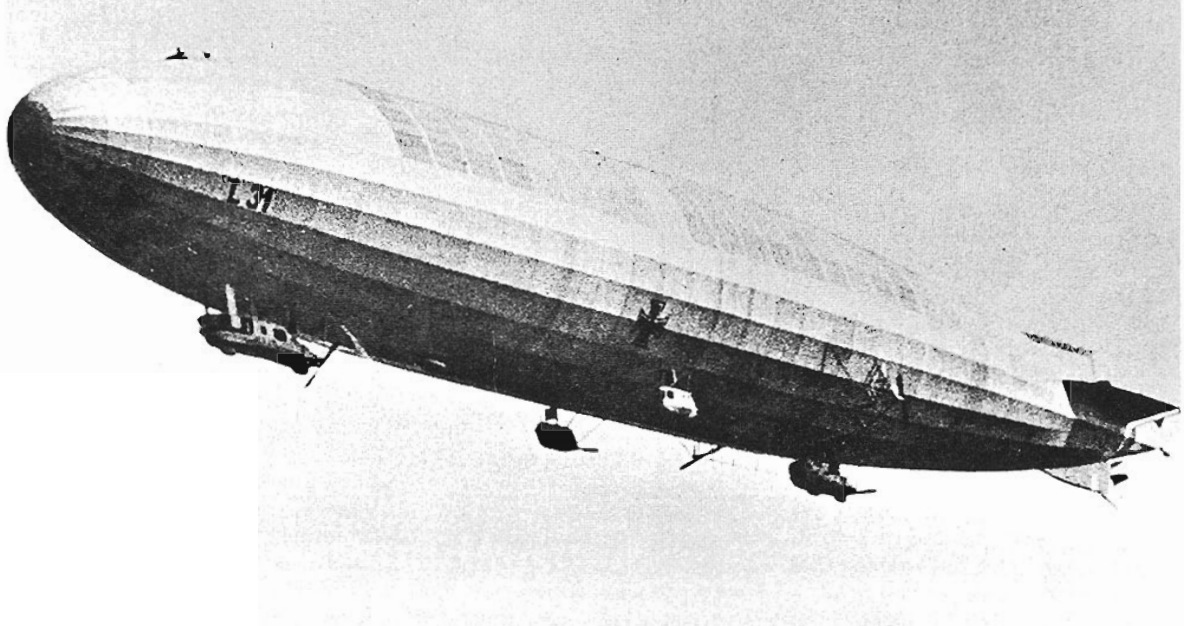
L 31, a participant in the Sunderland operation
In August, with the damage from Jutland repaired, Admiral Scheer, in command of the High Seas Fleet, decided to try the same plan again. The target would be Sunderland, on the North Sea coast of England, and the British would hopefully be drawn out past a line of waiting U-boats, which would inflict casualties. Hopefully, a small detachment could be isolated and defeated in detail, wearing down the British numerical advantage. Four airships would form a screen to the north to warn of the arrival of the Grand Fleet from Scapa Flow, and four others would watch for other British sorties. In theory, it was a good plan, but the Germans remained sadly ignorant of the British intelligence apparatus, and the Grand Fleet was through the patrol line before the Zeppelins arrived and making for its rendezvous with the other British forces.
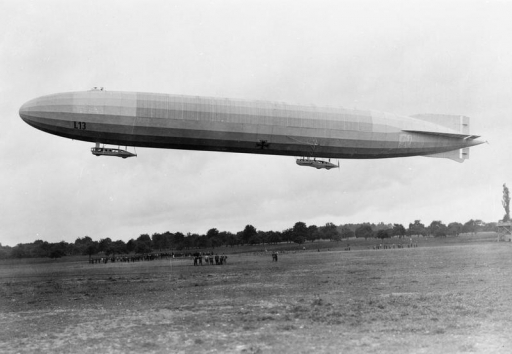
L 13, the Zeppelin that spotted the Harwich Force
Low clouds over the North Sea limited visibility from the airships, and the first German contact was made by one of the U-boats. One of them ducked down to take a look, and saw only a portion of the Grand Fleet, which the Germans took to be an isolated detachment. They soon lost contact, and a fortuitous course change by the British prevented the two forces from blundering into one another. Another Zeppelin picked up the light cruisers and destroyers of Harwich Force to the south, but mistook some of them for capital ships. Scheer, seeing an opportunity to take an isolated detachment, turned to engage, but Harwich Force slipped away. With his ships drawn out of position for the raid on Sunderland, Scheer turned for home. Several of the airships did encounter the Grand Fleet later that afternoon, but reported only a handful of battleships. Despite the presence of an apparently weaker force, Scheer decided against engaging.
Ultimately, this action, the first use of strategic air reconnaissance, had shown both the promise and the difficulties that would dog it for decades. Only a handful of Zeppelins participated, and between weather and the difficulties of identifying ships far below, they were unable to give Scheer a good picture of the sea around him. What they did give was limited and contradictory, and Scheer, unlike the Admirals of WWII, didn't understand it well enough to make good use of it. Almost by chance, he stayed out of the arms of the British and denied them a second chance for the crushing victory they longed for.
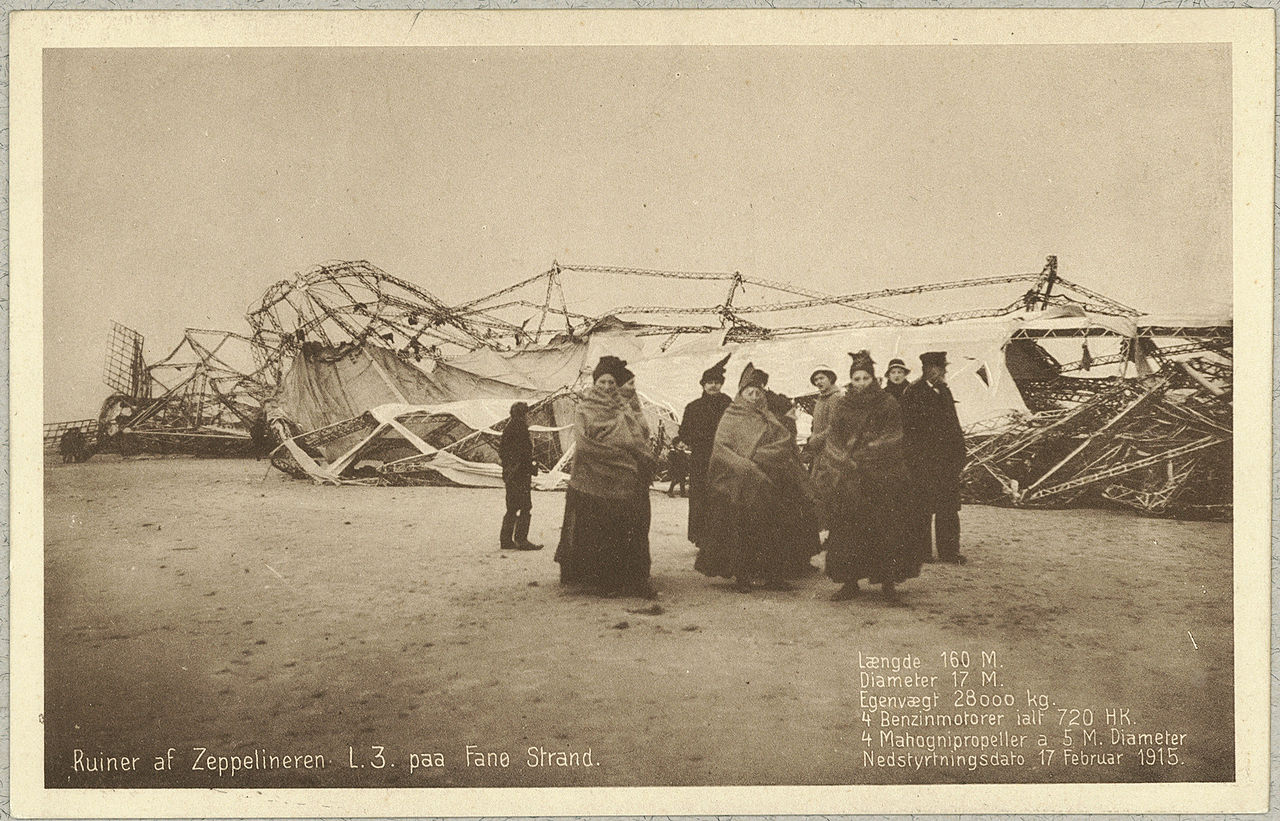
The wreck of airship L 3
The High Seas Fleet would only sortie twice more. One sortie, two months later, was covered by airships, but poor weather and lack of any opposition caused the Germans to withdraw. 1917 saw no deployments into the North Sea, while an attempt to catch a convoy to Norway in April 1918 fell foul of bad intelligence, while the weather kept the airships grounded. The next time the High Seas Fleet sailed, it would be to internment. But airships had roles to play in the naval war besides scouting for the High Seas Fleet. We'll pick up the story there next time.
1 I should probably lay my cards on the table here early. I am not a fan of the airship, in any way, shape or form. I think it was an interesting idea that was tried and found not to work, and has pretty much been rightly discarded by history. But at the same time, my interest in obscure corners of naval history means I can't really pass up the topic. ⇑
2 They also weren't technically airships, being unpowered, but they were too interesting to pass up. ⇑
3 Airships are usually divided into rigid and non-rigid. Rigid airships have a framework with gas bags inside, while non-rigids are kept in shape by gas pressure. ⇑
4 The Germans didn't employ the Zeppelin much in the anti-ship role, as it was far too vulnerable at low altitudes, and hitting a maneuvering target from high altitude was impossible. They did investigate a remote-controlled weapon for the purpose, presaging their later guided bombs. ⇑

Comments
So, the Mayfly didn't last very long. Nominative determinism strikes again!
Also, the Wiki article on the Mayfly's construction is pretty wild - after they finished building it they discovered she was three tons overweight and needed drastic modifications to be able to fly. It was less an airship and more a full-sized experiment in how to build one.
That Mayfly caption made me laugh out loud (after a split-second of confusion).
@beleester
Well, yes. This was the very early days of aviation, and they simply didn't know how things would work. Overweight wasn't a problem limited to Mayfly, either. Most of the British rigid airships suffered from it up through the end of the war. (And then there's R101...)
As spotty as this is, this is actually a better track record for German naval airships than I had anticipated. I was aware that about two thirds of them were lost one way or another (as is the case for most airships), but their losses aren't aren't out of line with other German aircraft in WW1 and on par with U-boats as well. I'm just surprised they accomplished anything in the process.
Do you know how the Zeppelin scouts were supposed to relay their findings to the fleet? I.e. were they equipped with radios, or did they rely on some kind of visual signaling?
It was mainly radio, usually with a big antenna. I think there was visual signalling equipment, but it was a backup in case the radio broke. (Or they were doing EMCON, I suppose, but the Germans never really did that.)
If you were going to choose a place to trial naval airships, the North Sea and Baltic are not the places I would choose. For weather related reasons if nothing else.
Though I suppose Germany didn't have much choice in the matter.
Modern lighter than air proposals often aim at being extremely high altitude, up above any weather. And then some ideas (such as the Google Loon) do without propulsion and use altitude control only, relying on the much more reliable, and altitude dependent, high altitude winds to move about.
I wonder if that approach
a) Could have been done at the time. They'd need a much lighter mass to volume ratio.
b) Could have worked.
Not really feasible at the time for several reasons. First, they couldn't really do anything useful at that altitude. (More on this in the next part.) Second, they couldn't get that high. Altitude was a major issue for the bombers (see previous parenthetical) and they did a bunch of work on "height climbers", but didn't get nearly that high. Plus, you'd need stuff like pressure suits which wasn't developed until the 30s. For that matter, I don't think you could get a rigid airship that high in principle. The structure and gasbags would be too heavy.
Was the Med not active enough in wwI to get airships sent? That seems like a much safer environment for combat trials.
There were a few airships that operated in that area, but not a lot. Keep in mind that supporting airship operations took a lot of technical capability and infrastructure, and that was all concentrated in Germany. Building up the support infrastructure in the Med would have cost a lot more in a theater the German Navy wasn't particularly worried about. (But there is at least one mention of those coming in the next installment.)
Super high altitude would be useless for bombing in WWI.
It was pretty useless in WW2, with much better location control and much lower altitudes. To hit anything they needed to go for targets many km in size (cities), and/or drop thousands of bombs in the hope that one or two would hit something vital.
But reconnaissance? They surely had telescopes that could view fairly well over many 10s of km.
Oh duh, of course. Hydrogen gas generators were cutting edge technology, and southern Italy wasn't exactly industrialized.
With all the fancy prototech it's easy to forget this was still the 1910s.
Southern Italy (all of Italy, in fact) was under Allied control during the war. As for hydrogen generation, it wasn't that they were cutting-edge so much as that a lot of hydrogen was needed for Zeppelin operations, in addition to things like big sheds. (Mooring masts hadn't been introduced in Germany yet.) Hydrogen generation was often a limit on operations in Germany itself, and I'd guess it played a major role in limiting airship operations in the Med.
We'd be looking at Ottoman Turkey, not Italy, for the German mediterranean ally in WWI.
Actually, I don't think there were any airship bases in Turkey. There was one in Bulgaria, IIRC, and it was the only one even moderately well-placed to support operations in the Med. (A few more details on this coming in Part 2.)
The Austrian fleet could also have been a Mediterranean ally of the Germans. Not a lot of coastline, but decently powerful.
As for the R101, there's a rather epic song about it, for anyone who's into that sort of thing: https://www.youtube.com/watch?v=YbAhn7iKLPc (It's Iron Maiden, but much less heavy than most of their work - much of it is piano-dominated)
The Austrian fleet was powerful on paper, but pretty much useless in practice. The Austrian was even less of a marine mammal than the German. Christopher Plummer and Otto Prohaska excepted, of course.
Likewise the Turk, but we're already living in the universe where one of the Kaiser's finest battlecruisers fought under the Ottoman flag. I'm not sure about the practical value, but there would have been a definite coolness factor in giving the Goeben/Yavuz some Zeppelin support.
It's also worth noting that the Med proper was pretty much blockaded by the Allies, (all Central Powers capital ships were stuck behind the Dardannelles or Otranto) so there wasn't all that much to support beyond the U-boat campaign. And I don't think the Germans thought that way, not to mention lots of practical difficulties. And a lot higher risk of running into fighters, particularly if you're operating out of Austria-Hungary.